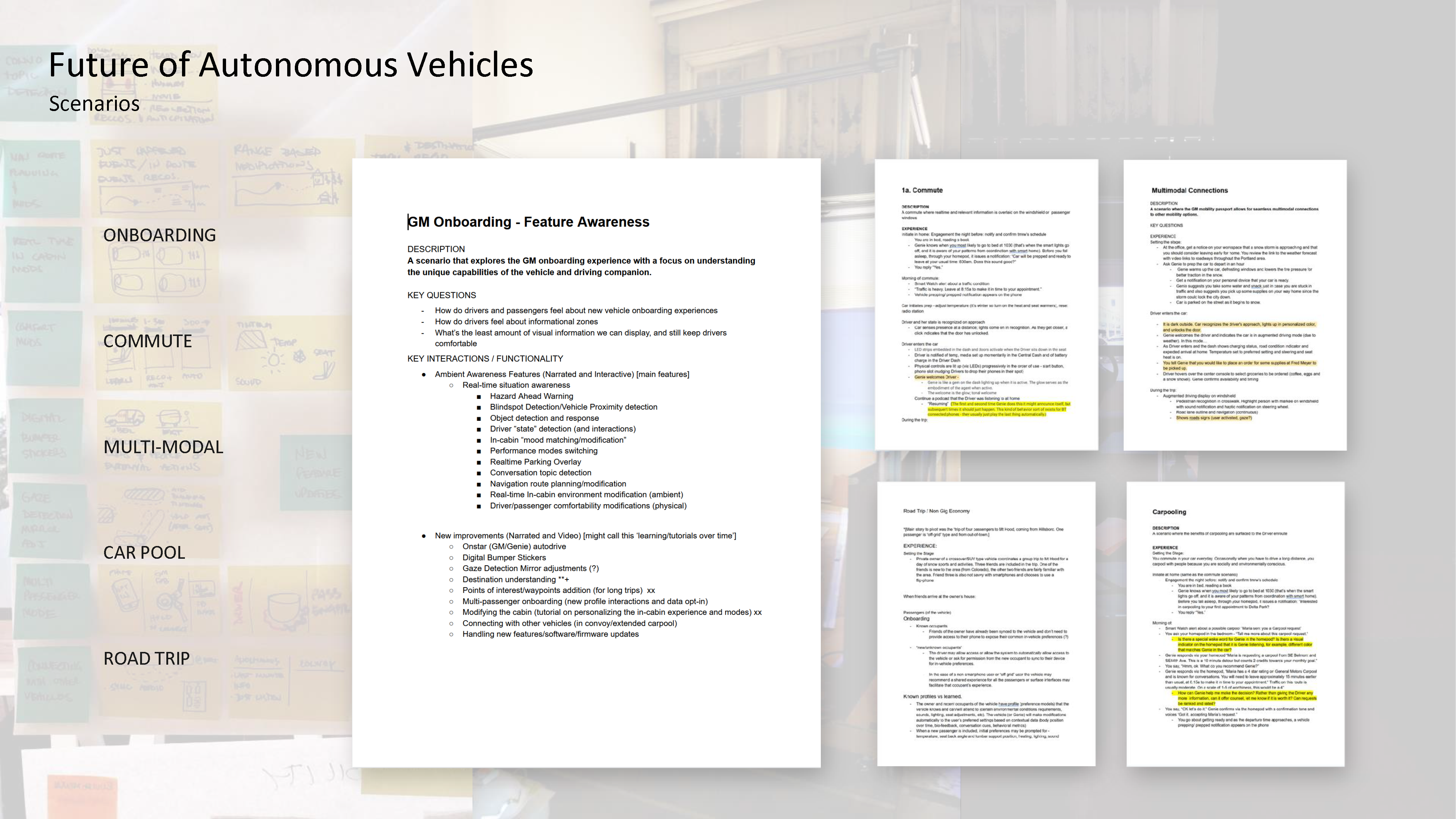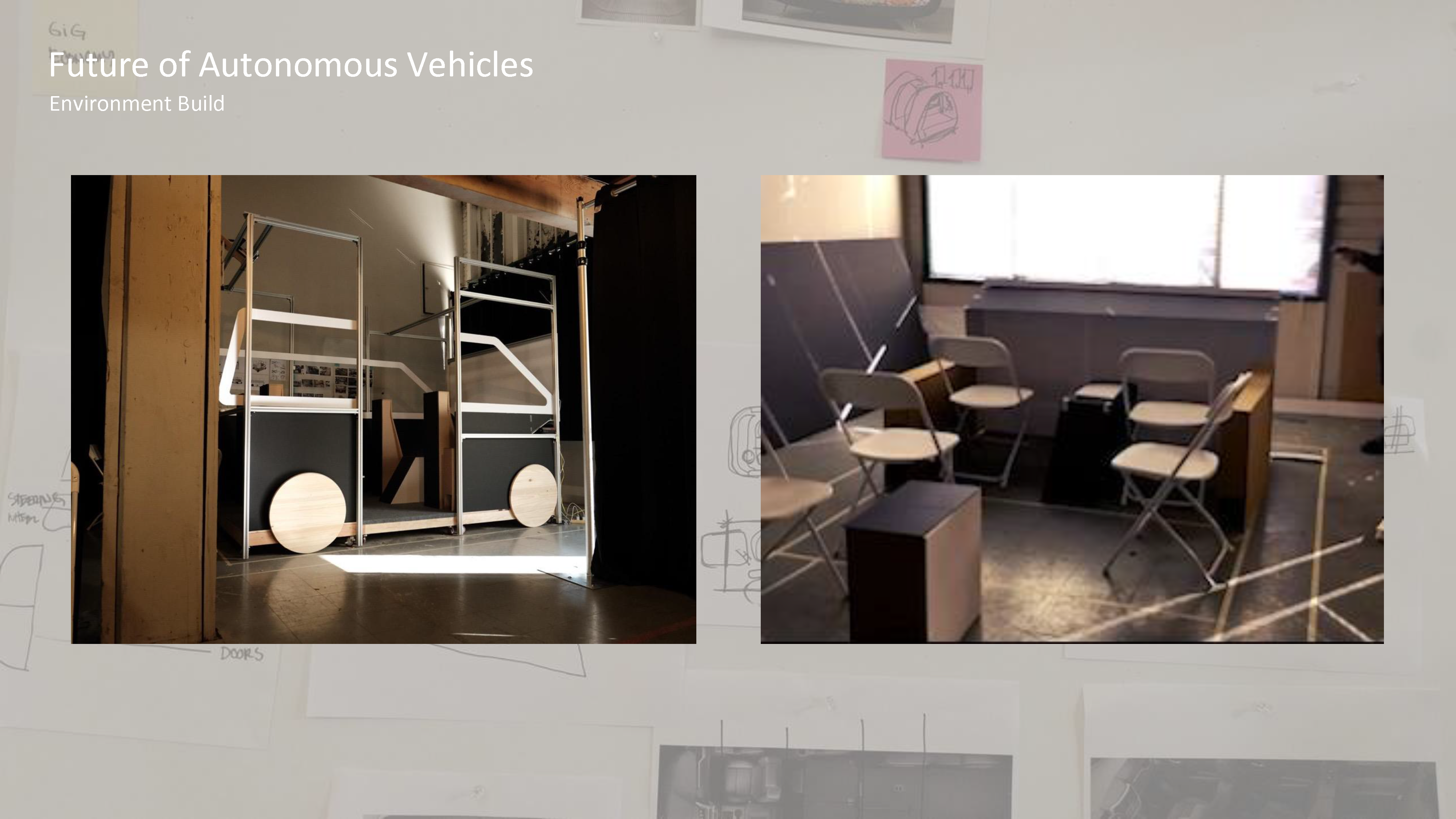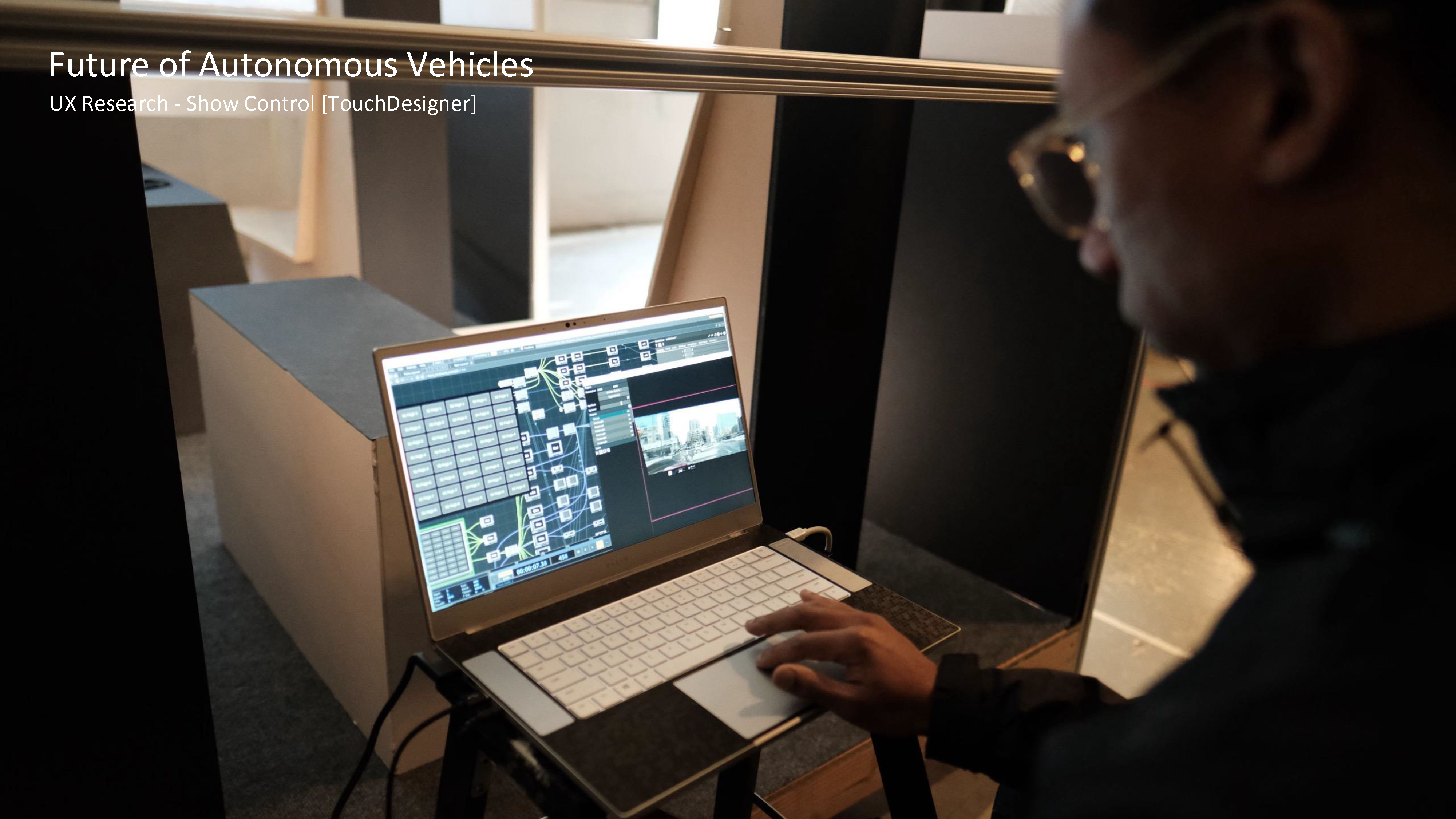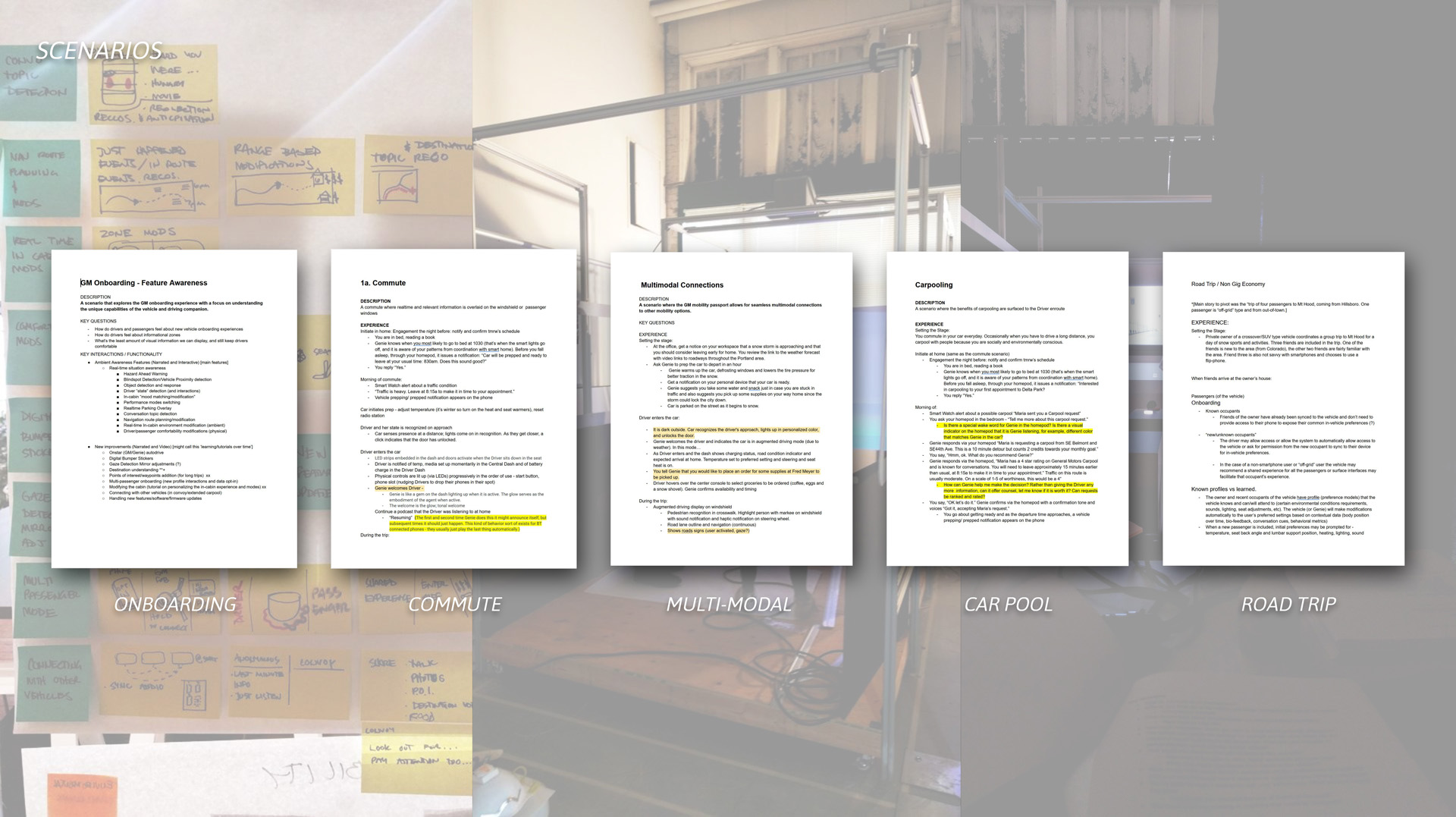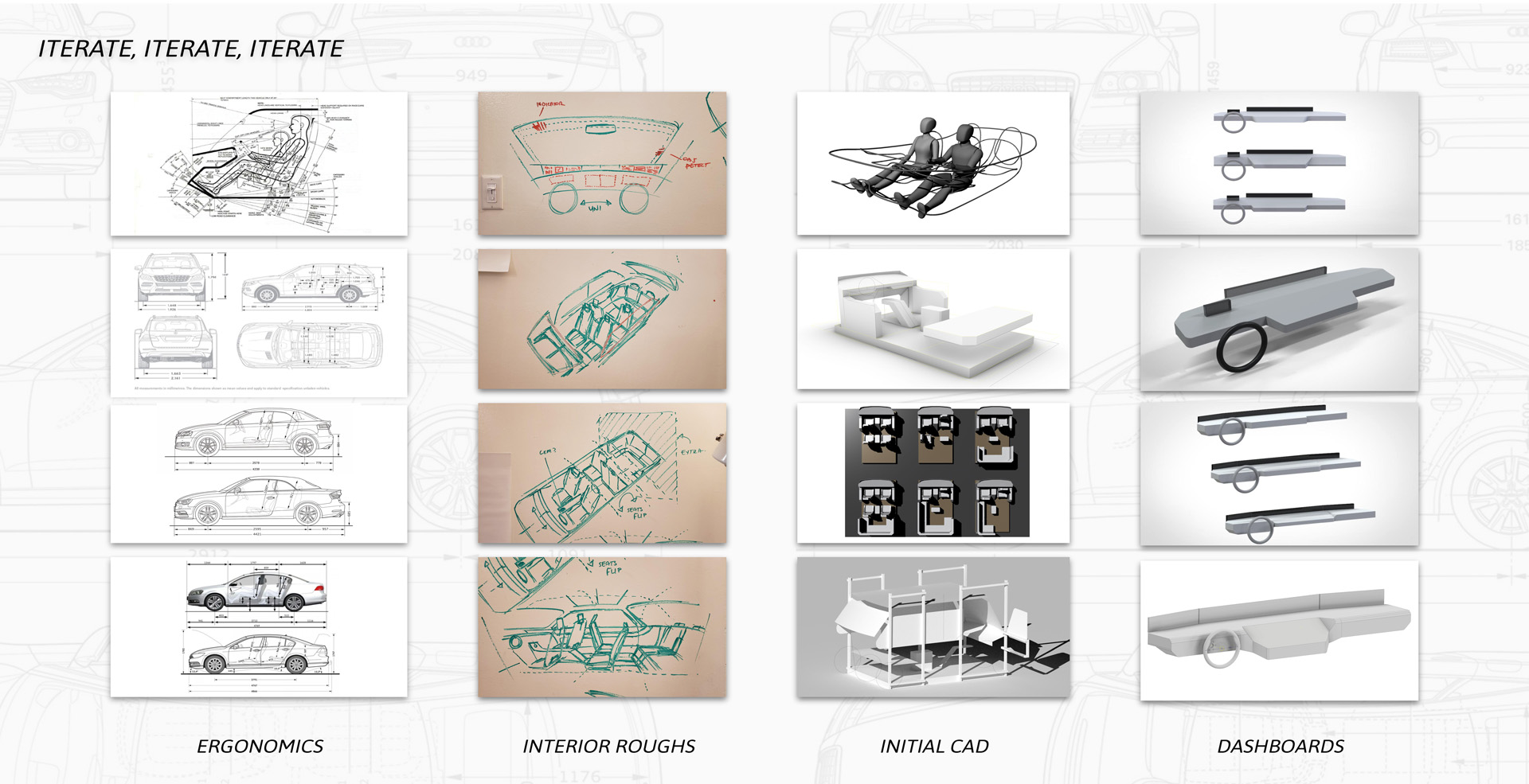At the beginning of 2020 I worked with Amplified, a design agency in Portland, to actualize the ideas brought to us by GM's Innovation Design group.
They came to us with the problem of how to conceptualize the future of interior interactions of level 3+ autonomous vehicles, and we delivered with research and interactive prototype dashboard designs.
The following videos showcase the buck I assisted in designing for our UX research purposes - and one in which I created a projection-mapped set of experiences for our participants to walk through. There are also interactive dashboard interface prototypes that I'd built and programmed for GM to reference. These were rapidly prototyped using TouchDesigner.
Audio Interface Prototype
A prototype for an in-dash media player whose controls would potentially live on the armrest of any passenger door in the vehicle. The interface employed TouchOSC for wireless comms and TouchDesigner as the no-code dev environment.
Media Player Display
Another prototype media player that I stitched together with TouchDesigner, with output to an HDMI TFT display.
Multi-GPU Dashboard
I decided to push things a bit and employ multiple GPUs to push output of information to displays that would be hidden from view and appear to a driver/passenger(s) based on live situations.
Contextual Display Toggle
This iteration included the smoked polycarbonate and the interface elements that were designed by the visual team - I took and animated these different "hidden/contextual" displays to showcase how information might be displayed to a user/passenger.
Simulator Integration
In this instance, I've got both TouchDesigner and Microsoft's AirSim as a demo for live input and automated driving experience. I instrumented a distance sensor under the desk that would detect an individual and turn on and off the contextual dashboard as one of many scenarios that might occur in the autonomous vehicle.
Performance Mode Transitions
This last demo showcases the visual elements that I've incorporated in the dash displays and animated for the various performance modes that might appear during commutes - "Efficient" vs "Standard" tuning in this case.
